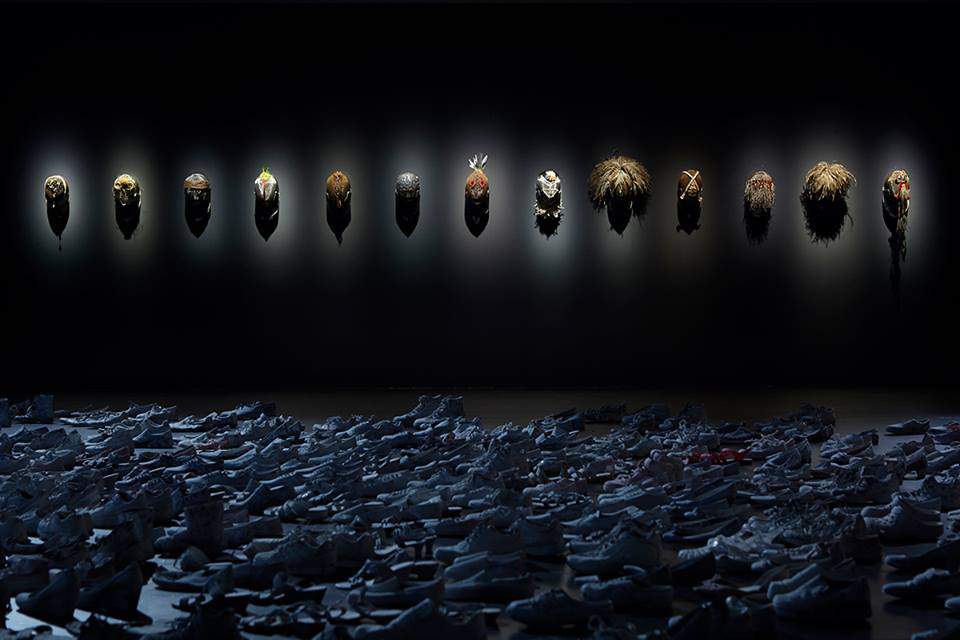Hereby Make Protest
Contemporary art works pay homage to Australia's overlooked civil rights heroes.
Overview
Illuminating an unjustly overlooked period of Aboriginal activism, Hereby Make Protest at Carriageworks is an exhibition comprising of historical documentation and new work by Indigenous artists Jacob Nash, Karla Dickens and Nicole Foreshew.
Prior to the Freedom Ride and the Gurindji Strike, the Aborigines Progressive Association formed in 1924 and is credited with instigating the rise of a civil rights movement in Australia. Paving the way for future revolutionaries, Jack Patten, Fred Maynard, William Cooper and William Ferguson joined forces to protest the lack of basic human rights available to Aboriginal Australians.
Various newspaper clippings, letters and meeting minutes draw a long history of protest and struggle. These salvaged documents convey the steady building of a national voice. Bringing this archival material to life, Nash, Dickens and Foreshew have produced large-scale artworks that seem to absorb these documents, seeping under their protective glass to infuse them with a renewed relevance.
Blending together Indigenous and colonial objects, Dickens' mixed-media sculptures evoke hierarchy and power struggle. Hanging from heavy hooks, Assimilated Warriors features suit jackets sprouting emu feathers and a number of rusted dog muzzles. With the brutish materials and menacing silhouettes, the work seems to mimic an execution. In this way, Aboriginal cultural identity has been held hostage and denied a voice.
Another eye-catching work is Demanding a Voice Is Tiresome, a quilt made of vintage fabrics and stamped with the logos of protest groups. Printed with trees and flowers, these scenes of domestic ease and ignorance are refused by a repeated symbol of defiance. Dickens has disallowed complacency — responsibility is in the home of every Australian.
The quiet rhythm of Nicole Foreshew’s single channel videos permeates the space. Has Come from Somewhere depicts a lone figure moving back and forth, accompanied by a hymn by Harold Blair. His balletic gestures are mesmerising as smoke rolls in like fog and slowly dissipates. Like a faded memory, he raises his arms as if conducting an imaginary choir before retreating into darkness. The man's elusiveness is enhanced by the rough texture of the recording. As he smooths his tie, straightens his suspenders and tips his hat, Foreshew compels us to pay attention to every minute movement.
A sea of shoes takes up a large amount of floor space; Nash has painted almost 700 pairs with white ochre. It is a protest movement evacuated of human protesters; however, there is an atmosphere of solidarity and collective responsibility. The positioning of the shoes suggests naturalistic postures, evoking the dynamism and spontaneity of a real protest. What also humanises the work is the way it interacts with other works. For example, faced towards Foreshew’s video, it appears as if the absent wearers are standing in quiet reverence, watching and listening.
There's a lot crammed into this space. Nevertheless, Hereby Make Protest is just as much a historical reflection as it is a contemporary call for action. By prying open the pages of history, these artists continue to question, reinterpret and, importantly, put forth what is yet to be done.





